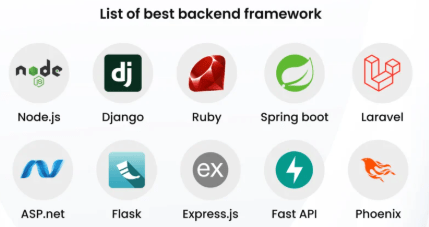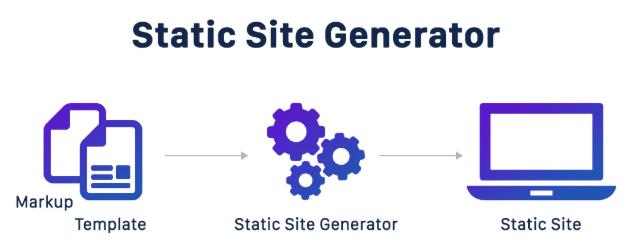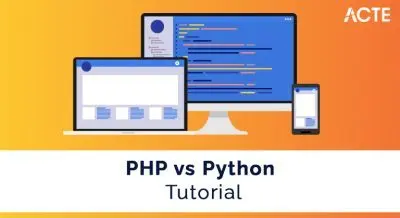
- Introduction to Web Development Frameworks
- Frontend Frameworks: React, Angular, Vue
- Backend Frameworks: Node.js, Express, Django
- Full-stack Frameworks: Meteor, Laravel
- Static Site Generators: Gatsby, Hugo
- Choosing the Right Framework for Your Project
- Benefits of Using Frameworks in Web Development
- Frameworks in Web Development Trends
Introduction to Web Development Frameworks
Web development frameworks have become integral to building modern websites and applications. A framework is a pre-built set of tools, libraries, and guidelines that allows developers to focus more on the functionality of their project instead of spending time on repetitive tasks. Web Designing and Development Courses frameworks streamline the development process, ensuring developers follow best practices and maintain a consistent structure throughout the application. Various types of frameworks are available, each catering to a specific aspect of web development. They can be broadly categorized into frontend, Backend Frameworks, static site generators, and hybrid web development frameworks. Choosing the proper framework for your project depends on various factors such as project requirements, the solution’s scalability, development speed, and the project’s complexity.
Frontend Frameworks: React, Angular, Vue
React, developed by Facebook, is one of the most popular frontend frameworks in the world. It is a JavaScript library used for building user interfaces, primarily for single-page applications (SPAs). It allows developers to create reusable UI components and manage the application’s state efficiently. One of the key features of React is its virtual DOM, which optimizes rendering by updating only the changed parts of the UI, improving the overall performance of the application. React’s component-based architecture makes it highly modular and scalable. It is widely adopted for creating complex applications that require a dynamic and interactive user interface. React’s ecosystem also includes tools like React Router for routing and Redux for state management, further enhancing its capabilities. Angular, developed by Google, is a full-fledged, feature-rich framework for building dynamic web developers. Angular uses TypeScript, a superset of JavaScript, which allows developers to write type-safe code and makes it easier to maintain large applications. Angular’s declarative templates, dependency injection, and two-way data binding are some of the standout features that make it ideal for enterprise-level applications. Angular provides a complete solution for building modern web applications, including everything from the user interface to server communication and routing. It’s often chosen for large-scale projects due to Map Function in React JS powerful tooling and robust support for testing, modularity, and maintainability. Vue.js is a progressive JavaScript framework designed to be incrementally adoptable. Unlike React and Angular, Vue allows developers to integrate it into an existing project without a complete overhaul. Its reactive data-binding system, combined with its simple and intuitive syntax, makes it ideal for both small-scale applications and large, complex projects. Vue is lightweight, easy to learn, and highly flexible. Its growing community and increasing number of third-party tools and libraries make it a solid choice for developers looking for simplicity combined with power. Depending on the project’s needs, Vue can be used for both single-page applications and more traditional web applications.
Advance your Web Development career by joining this Web Developer Certification Courses now.
Backend Frameworks: Node.js, Express, Django
Node.js: Node.js is a runtime environment that allows JavaScript to be run on the server side. Downloading Node.js and NPM uses an event-driven, non-blocking I/O model, making it lightweight and efficient for handling numerous simultaneous connections. Node.js is ideal for building scalable, real-time applications like chat applications and live data streaming services. With JavaScript becoming popular for frontend development, Node.js allows developers to use a single language for both client and server-side development. This unification reduces the context-switching and learning curve often associated with using different languages for the front and back ends.

Express: Express.js is a minimalistic web application framework for Node.js that simplifies the development of web applications and APIs. It provides robust features for handling routes, middleware, requests, and responses, allowing developers to focus on the application’s business logic. Express is known for its simplicity and flexibility. Node.js Non-Blocking Behavior in Web Developer Training is often used to build RESTful APIs, single-page applications, and server-side rendering applications. The Express ecosystem is rich with plugins and tools that enhance the development experience, making it a go-to choice for Node.js developers.
Django: Django is a high-level Python web framework encouraging rapid development and clean, pragmatic design. It follows the “batteries-included” philosophy, providing developers with everything they need to build a web application, including authentication, routing, and database management. Django is known for its security features, including protection against SQL injection, cross-site scripting, and cross-site request forgery. It also provides an integrated ORM (Object-Relational Mapping) system, which allows developers to interact with databases using Python instead of SQL, making database management easier and more intuitive.
Equip yourself with real-world skills and projects in web development through this top-rated Web Developer Certification Course.
Full-stack Frameworks: Meteor, Laravel
Meteor is a full-stack JavaScript framework that allows developers to build real-time, scalable web applications in a unified environment. It includes tools for both client-side and server-side development and is known for its simplicity and productivity. One of Meteor’s key features is real-time data synchronization between the client and server. This makes it perfect for applications that require live updates, such as social media platforms or collaborative tools. DevOps vs Full Stack also supports rapid development, thanks to its out-of-the-box integrations with MongoDB and built-in user authentication. Laravel is a PHP-based full-stack framework that provides a clean and elegant syntax for web developers. It follows the Model-View-Controller (MVC) architectural pattern and offers many features, including routing, authentication, caching, and session management. Laravel is highly praised for its developer-friendly tools, including Artisan (a command-line interface), Blade templating engine, and Eloquent ORM. It is widely used for building complex web applications and is known for its robustness, security features, and ease of use.
Static Site Generators: Gatsby, Hugo
- Gatsby is a static site generator built on top of React. It allows developers to make fast and scalable static websites using GraphQL to pull data from various sources, such as CMSs, APIs, and database management.
- Gatsby’s primary focus is on performance optimization, and Web Developer Certification Courses generates static files that can be easily hosted on CDNs, improving the website’s speed and user experience.
- One of Gatsby’s standout features is its plugin ecosystem, which allows developers to easily integrate various third-party tools and services. It’s an excellent choice for building blogs, e-commerce, and documentation sites requiring speed and scalability.
- Hugo is a fast and flexible static site generator written in Go. Node.js Developer designed to build websites quickly, even for large projects, and doesn’t require a database or server-side language.
- Hugo generates static HTML files that can be deployed anywhere, making it ideal for blogs, personal websites, and documentation.
- Hugo is highly customizable and provides a robust templating system, allowing developers to create highly dynamic, static sites easily. Its speed, flexibility, and ease of use make it a popular choice among developers who need to build static websites quickly.

Become a Web Development expert by enrolling in this Web Development Training today.
Choosing the Right Framework for Your Project
Selecting the proper web development framework depends on the project’s specific requirements, such as scalability, performance, security, and developer skill sets. Here are some factors to consider when choosing a framework:
- Project Type: Static sites, dynamic web applications, and single-page applications have different requirements. Choose a framework that is tailored to your project type.
- Team Expertise: Your development team’s familiarity and experience with a particular framework should be considered. Learning a new framework can take time, so choosing one that aligns with your team’s skill set may be beneficial.
- Performance Needs: If performance is a critical aspect of your project, consider frameworks that offer optimization features, such as React Native Made Simple – Beginner’s Step-by-Step Guide site generators (e.g., Gatsby or Hugo) or real-time capabilities (e.g., Meteor).
- Scalability: Choose a framework that can grow with your project. If you anticipate scaling the application in the future, select a framework that provides built-in support for scaling and performance improvements.
Preparing for a job interview? Explore our blog on Web Development Interview Questions and Answers!
Benefits of Using Frameworks in Web Development
- Efficiency: Frameworks offer pre-built components and tools, reducing the amount of custom code developers need to write.
- Consistency: Backend Frameworks enforce best practices and design patterns, resulting in a consistent codebase that is easier to maintain and scale.
- Security: Many frameworks come with built-in security features, such as protection against cross-site scripting (XSS) and SQL injection, Scope of Web Development the risk of vulnerabilities.
- Community Support: Popular frameworks often have large communities that provide access to tutorials, libraries, and third-party tools that accelerate development.
- Scalability: Frameworks like Angular, Django, and Node.js allow developers to build applications that scale efficiently as the project grows.
Frameworks in Web Development Trends
Web development frameworks continue to evolve, with new trends emerging regularly. The latest trends include serverless architecture, JAMstack (JavaScript, APIs, Markup), and micro-Frontend Frameworks. Web Designing Training trends push the boundaries of what frameworks can do, focusing on performance, scalability, and developer experience. Hybrid and static site generators like Gatsby and Hugo are gaining traction due to their performance advantages. As web developers’ practices advance, staying updated with the latest trends and choosing the proper framework for your needs will ensure you build robust, high-performing, and maintainable web applications.




